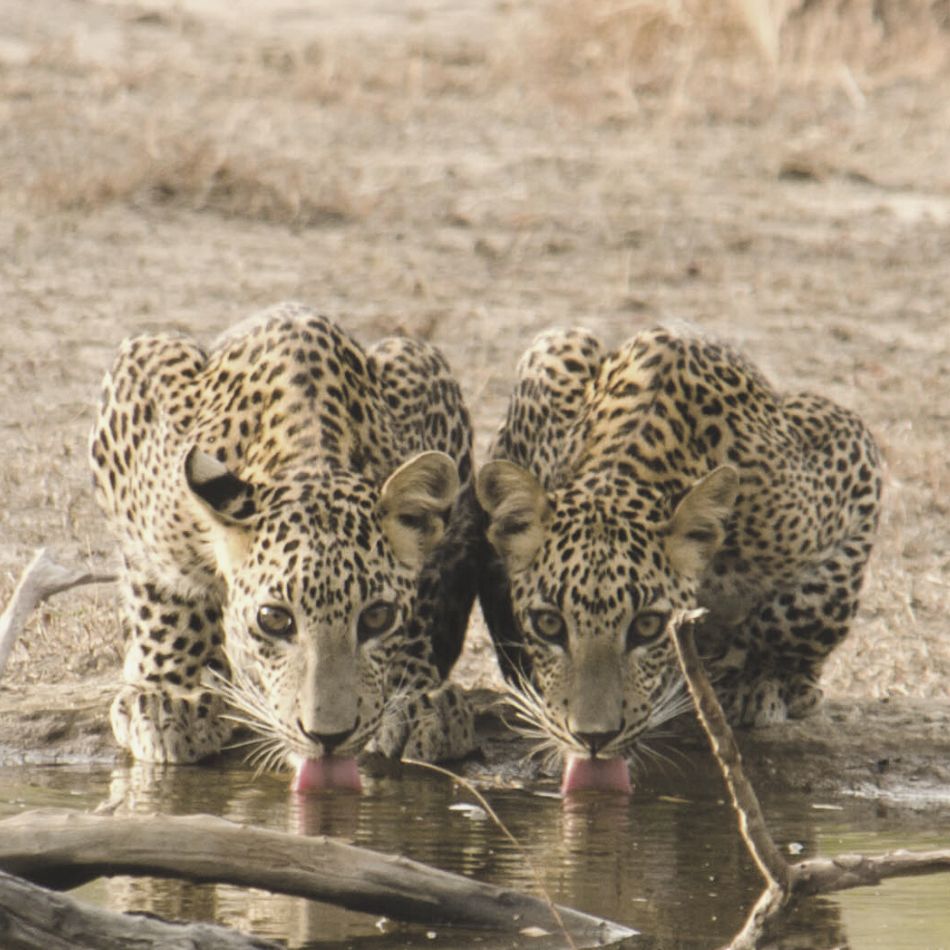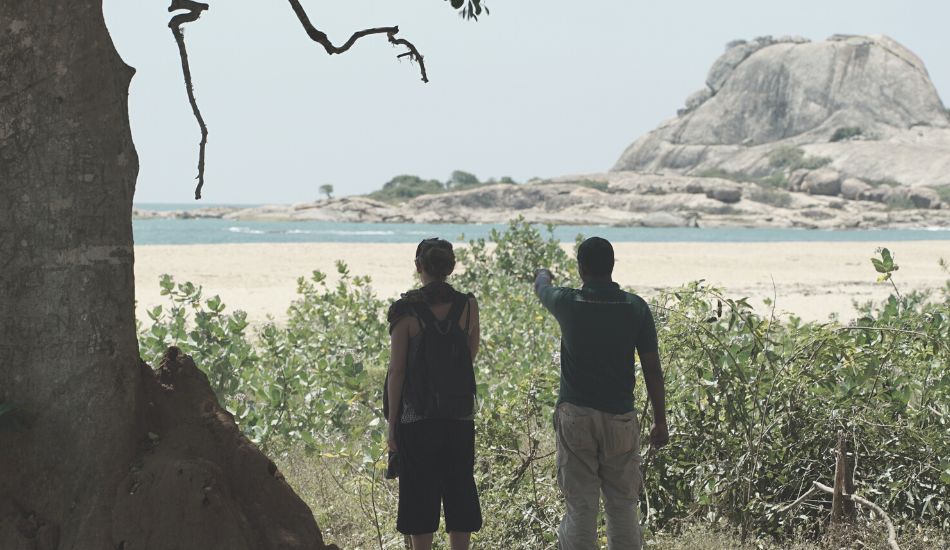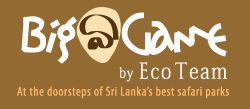Yala Safaris - Best Guided Yala Safari Options
Yala National Park
The Yala National Park is the most popular destination for wildlife safaris in Sri Lanka, a fact which is largely due to its Sri Lankan Leopard population.
It is noted as being the best place in the world to photograph and observe this majestic and endangered animal frequently.
In addition the Yala National Park is also home to Sri Lankan Elephants, Sri Lankan Sloth Bears and many species of birds, reptiles and amphibians.
It is noted as being the best place in the world to photograph and observe this majestic and endangered animal frequently.
In addition the Yala National Park is also home to Sri Lankan Elephants, Sri Lankan Sloth Bears and many species of birds, reptiles and amphibians.
Sri Lankan Leopards in action at the Yala National Park
The Yala National Park is internationally renowned for being the greatest location to spot Sri Lankan leopards in the wild, and one area of the Park has been recognized as having the world's highest density of leopards living in the wild.
The Sri Lankan leopard is a recognized subspecies of the Indian leopard and is also the largest leopard in Asia. Around 350 Sri Lankan leopards live within the confines of this National Park and about 30 to 50 roam around Block I.
The Sri Lankan leopard is a recognized subspecies of the Indian leopard and is also the largest leopard in Asia. Around 350 Sri Lankan leopards live within the confines of this National Park and about 30 to 50 roam around Block I.
The best leopard-spotting opportunities while on safari are generally at dawn and at dusk. The male leopards in the Yala National Park are surprisingly confident animals and they are often seen walking the tracks during the day. Young males in particular seem to have no fear of vehicles, which allows for some excellent photographic opportunities. As world renowned Wildlife photographers Angela and Jonathan Scott recently quoted after their visit to the Yala National Park, "If God created somewhere for leopards, it had to be Yala".


Choosing your Yala Safari accommodation
It is essential when considering Yala safari accommodation options that you choose the one that minimizes your travel time so that you are able to spend the most amount of time on safari drives. With Big Game Safari tented safari camps you will be located outside the park within a 20 minute drive to the entrance in a semi wilderness location just behind the Nimalawa sanctuary. Elephants are frequent visitors to this campsite and staying at Big Game tented safari camps allows for walking safaris as well as night safaris too. For more information of Big Game Safari accommodation options.
A closer look at the Yala National Park
The Yala National Park lies on the southeast coast of Sri Lanka, and spans almost 98,000 hectares over the Southern and Uva Provinces. The vegetation in the Park comprises predominantly semi-arid thorny scrub, interspersed with pockets of fairly dense secondary forest. Small patches of mangrove vegetation also occur along the coastal lagoons. The Park borders a healthy coastline, which is home to many pristine reefs. The Park is in close proximity to important cultural sites such as Sithulpahuwa and Kataragama which bear testimony to earlier civilizations and indicate that much of the area used to be populated and well-developed. Block I is the most visited part of the Park and has an average Sri Lankan leopard population of one leopard per square kilometre. The number of leopards in the other Blocks is presently unknown.
The Yala National Park was granted National Park status in 1900 and its first Warden was Henry Engelbrecht. It is one of the first two National Parks in Sri Lanka and plays a vital role in the conservation of fauna and flora on the island.

Wildlife safari encounters like no other at the Yala National Park
The Yala National Park is home to a variety of wildlife some of which are endemic to Sri Lanka. One of these is the Sri Lankan Elephant which is a recognized subspecies of the Asian Elephant. Large herds of these endangered animals can be seen inside Yala. Others include the Sri Lankan Sloth Bear, Spotted Deer, Water Buffaloes, Crocodiles and 44 species of mammals.

Birdlife at Yala
For bird enthusiasts, the birdlife in the Yala National Park is superb. Not only does Sri Lanka's tallest bird, the critically endangered Black-necked Stork reside in the Park, but often observed is the country's largest bird, the instantly recognizable and ungainly looking Lesser Adjutant.
Over 215 species of birds have been recorded in Yala, with six being endemic to Sri Lanka and just outside the boundaries of the Park are several important nesting locations.

Reptiles and Amphibians at Yala
Of the 46 species of reptiles recorded in Yala, five are endemic to Sri Lanka. Twenty-one species of amphibians and 21 species of fish can be found here while the coast forms a nesting ground for marine turtles. Often seen are the Mugger Crocodile and the Saltwater Crocodile as well.
Flora at the Yala
National Park
The flora in the Yala National Park is made up of moist monsoon forests, dry monsoon forests, semi deciduous forests, thorn forests, grasslands, fresh water and marine wetlands, and beaches. Block I is also made up of waterholes, tanks, lagoons, mangroves and chena lands while the forest canopy is mostly seen in the other Blocks. Some 300 species of flora have been recorded at the Park.
Climate at Yala
National Park
The elevation of the Yala National Park is 30 metres close to the coast and it rises in the interior to 100 to 125 metres. It is situated in the dry semi-arid climatic region and rain is received mainly during the northeast monsoon. The mean annual rainfall ranges between 500 – 775 millimetres while the mean temperature ranges between 26.4°C in January to 30°C in April

Yala National Park - Sri Lanka
Best time to visit Yala
There is no best time per se to visit the Yala National Park as animals can be seen pretty much all year round here.
The Park has been known to close in September and November though it has not happened in the last two years.
The Park has been known to close in September and November though it has not happened in the last two years.
Find more information about Big Game Camps at Yala
Your amazing Sri Lanka safari is just a click away!
For amazing stories on Big Game,
Subscribe
Big Game Camps, proud winner of the Tripadvisor Travellers' Choice Awards 2024.
Safariline :
(+94) 70 222 8 222
WhatsApp Number:
+94 71 066 22 02
Fax:
+94 (0) 115 330 581
Office Hours:
8.30 a.m to 5.30 p.m [UTC+5.30]
(Monday to Friday)
Partners:
Mahoora Tented Safari Camps, Ahaspokuna Bush-Walks Camps, Wildlife Tours Sri Lanka,
Cycling Holidays Sri Lanka, Funky Leopard Safari Lodge
Sri Lanka Big Game Safaris is a venture by Sri Lanka's premier adventure operator Eco Team Pvt Ltd.
© 2024, Big Game Camps by Eco Team.


